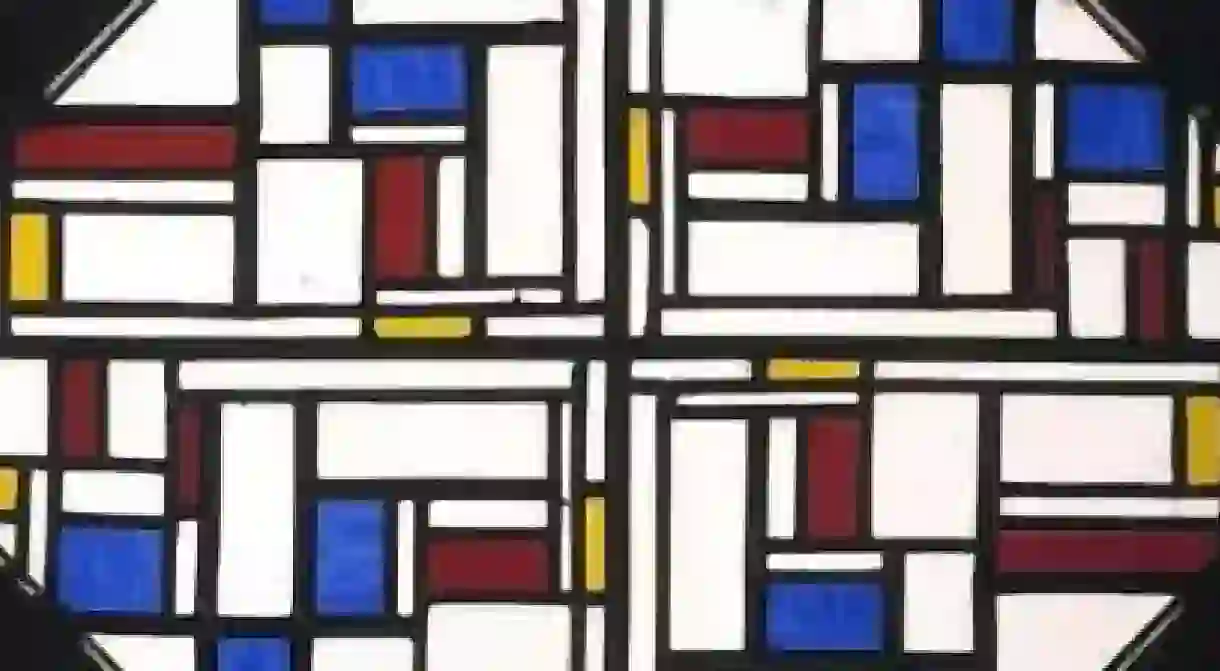The Essential Artworks By Theo Van Doesburg To Know

Theo van Doesburg (1883-1931) was a Dutch artist who dreamed of bringing an avant-garde edge to the industry. Painter, designer, and art critic, van Doesburg was restless in his endeavor to create purely modern works. Much of his work echoes the aesthetic of his friend, Piet Mondrian – the renowned abstract painter and member of the De Stijl school. We profile five of van Doesburg’s essential works.
Composition in Gray (Ragtime)
Composition in Gray (Ragtime) has blatant cubist elements. Stripping art back to its most simple form, van Doesburg advocated that art has “no significance other than itself” and that “nothing is more real than a line, a color, a surface.” He supported the viewpoint that art in its most essential form is a way to extract something from the natural world and experience it spiritually. Composition in Gray can be related to the idea of achieving the realm of the “fourth dimension” through abstract cubism. The painting is rich in spite of being monochrome, and as well as the prevailing hard right-angled shapes it includes an oval shape at the bottom. It may appear simple at first sight but the more you look at it the more complexities and nuances you will find. The work is part of the Guggenheim‘s collection.

Self-Portrait with Hat
Theo van Doesburg used oil on canvas for his dark expressionist self-portrait, reminiscent of Vincent Van Gogh’s Self-Portrait With a Straw Hat. The artist painted at least three versions of Self-Portrait With Hat, each exuding a different emotion. All of them are exhibited at Stedelijk Museum, Amsterdam. The earliest, finished in 1906, shows a young man with an expression of sincerity. The later two, completed in 1909, show a more brooding figure. The portraits make it easier to get a sense of how Theo van Doesburg saw himself at the time.

Composition VII
Typical of the neo-plasticist movement invented by Mondrian and frequently featured in De Stijl, Composition VII includes all the conventional elements of the movement: use of black, white and primary colors, use of horizontal and vertical lines and rectangular shapes. Reminiscent of some of Mondrian’s paintings, Composition VII is an alternative take on solid interlocking quadrilaterals. Having the support of Mondrian for this type of painting, van Doesburg caused quite a rift when he strayed from stringent neo-plasticist guidelines and incorporated diagonal lines in later work. You can find this work in the Mildred Lane Kemper Art Museum in St. Louis, Missouri.

Composition With Window With Coloured Glass III
With this modern stained-glass design van Doesburg’s moves away from the frills of embellished and illustrative Medieval stained glass. No less mesmerizing, however, due to its clean and pleasing composition, this work places primary colors in juxtaposition with the prevailing white. The work can be seen in the Museum de Lakenhal, Leiden.

Contra-Construction Project
Telling of van Doesburg’s incredible spatial imagination and part of his journey into engaging with architecture, Contra-Construction Project attempted to translate the strict geometrical forms of two-dimensional neo-plasticism works into modern architectural design. Theo van Doesburg’s fascination with transforming two dimensions into three dimensions is progressive. With a great repertoire displaying the resonance of simplistic geometry, the move to three-dimensional shapes explores different perceptions of space. Contra-Construction Project is descriptive of van Doesburg’s exceptional vision and desire to explore art in depth and from different perspectives. The work is part of the MoMA‘s collection.













